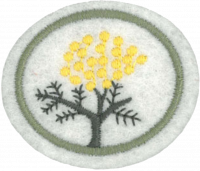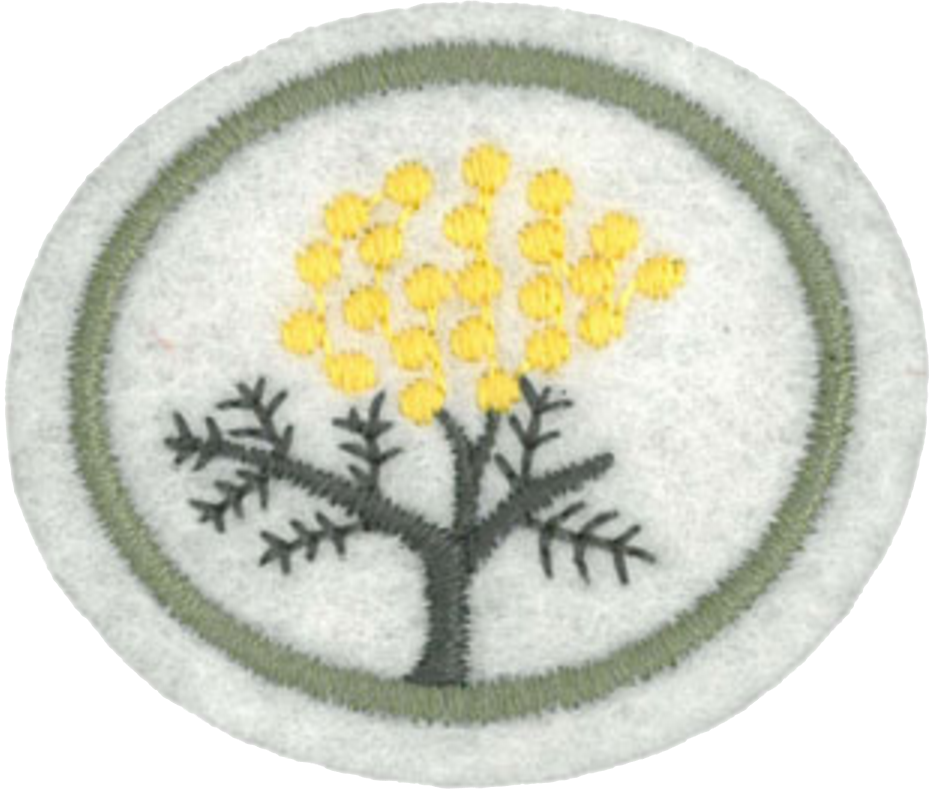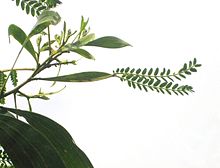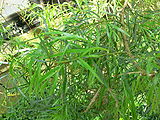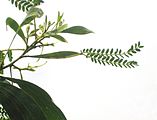Difference between revisions of "AY Honors/Wattles/Answer Key/es"
(Created page with "{{clear}}") |
(Created page with "</noinclude> ==Referencias== Category:Adventist Youth Honors Answer Book/es <noinclude>") |
||
| Line 162: | Line 162: | ||
<noinclude></noinclude> | <noinclude></noinclude> | ||
{{CloseReq}} <!-- 12 --> | {{CloseReq}} <!-- 12 --> | ||
| − | <noinclude> | + | <noinclude></noinclude> |
| − | </noinclude> | + | ==Referencias== |
| − | == | + | [[Category:Adventist Youth Honors Answer Book/es]] |
| − | + | <noinclude></noinclude> | |
| − | |||
| − | |||
| − | |||
| − | [[Category:Adventist Youth Honors Answer Book | ||
| − | <noinclude | ||
| − | |||
{{CloseHonorPage}} | {{CloseHonorPage}} | ||
Revision as of 20:46, 10 April 2021
1
2
Phyllodes are modified leaf stems (also called petioles). In some plants, the petioles become flattened and widened, and the true leaves may become reduced or vanish altogether. Thus, the phyllode comes to serve the purpose of the leaf. Phyllodes are common in the genus Acacia, especially the Australian species, at one time put in Acacia subgenus Phyllodineae. Sometimes, especially on younger plants, partially formed phyllodes bearing reduced leaves can be seen.
3
Acacia leaves come in two major forms: bipinnate, and phyllodes.
Pinnate leaves are compound, consisting of leaflets. The word pinnate comes from the Latin word pinna for "feather". In fact, the word pen shares this origin, as the first ink pens were made from feathers. In bipinnnate leaves, the leaflets have leaflets of their own, as in the top image to the right.
4
Some species of acacia are difficult to tell apart. They may be identical in every other outward appearance, but have starkly (or subtly) different seed pods. For example Acacia farnesiana and Acacia pulchella look very much alike, but the seed pods are different.
5
There are three subgenera of Acacias that retain bipinnate leaves when fully grown, namely Botrycephalae, Pulchellae, and Aculeiferum.
6
The first leaves to emerge from an acacia sprout are true leaves. In plants that will develop phyllodes, the true leaves persist until the plant is about a meter tall.
7
Before an acacia seed can germinate, the seed coat must be cracked. This can happen by any of several methods, but fire is the most common. People who grow wattles can crack the seed coats themselves using a three-cornered file. Seed coats can also be cracked by being run over by heavy machinery during construction projects, or by other physical stresses.
8
The phyllodes of the Acacia cyanophylla (Blue Leaf Wattle) have been used to feed sheep during times of drought.
9
The bark of various Australian species, known as wattles, is very rich in tannin and forms an important article of export; important species include Acacia pycnantha (Golden Wattle), Acacia decurrens (Tan Wattle), Acacia dealbata (Silver Wattle) and Acacia mearnsii (Black Wattle).
10
Most acacia species are used for valuable timber; such are Acacia melanoxylon (Blackwood) from Australia, which attains a great size; its wood is used for furniture, and takes a high polish; and Acacia omalophylla (Myall Wood, also Australian), which yields a fragrant timber, used for ornamental purposes.
11
Food uses
Acacia seeds are often used for food and a variety of other products.
12
20 o más fotografías de cerca que haya tomado de acacias mostrando los detalles arriba mencionados.
The best approach to this requirement is to go out into the field and find some wattles - then identify them. There are numerous books and CDRoms available for purchase that will help in identifying the various species. There are also a few dichotomous keys online, such as this one which are free (though not necessarily easy to use).
